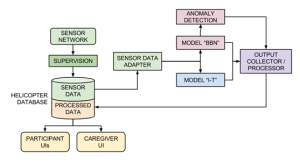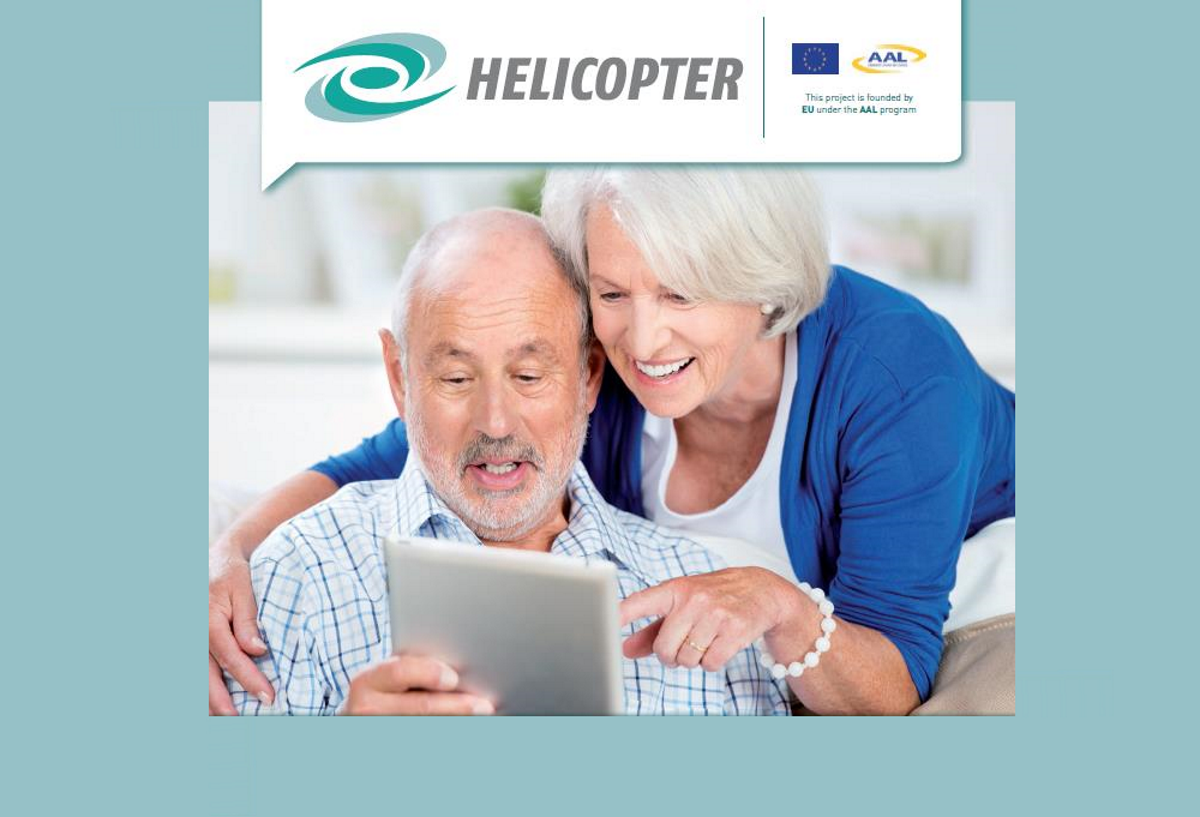This project is predominantly addressed to elderly people who are not affected by serious medical conditions or disabilities, but who are at risk of metabolic or circulatory diseases (for instance, hypertension or mild diabetes), as well as mild cognitive deficit.
This project relies upon innovative Ambient Intelligence technology, which has been available on the market for some time and is accessible to our project partners, to identify and profile lifestyle and health conditions of elderly people by indirect, hardly invasive monitoring. The purpose is to develop useful services to properly motivate and guide users in choosing healthier lifestyles.
Helicopter hinges upon communication among simple devices capable of measuring and collecting clinical parameters (for domestic use) from wearable and environmental sensors that converse with a software able to create behavioral patterns from “raw” data, and, subsequently, formulate and share motivational activities with end users, caregivers, or remote users (for instance, physicians).

The system uses different classes of sensors: environmental (home automation, energy saving, comfort, safety), clinical and physiological (to monitor body weight, arterial blood pressure, and glucose level), as well as personal wearable types (to monitor body movement, posture, falls, and user’s ID). The sensors communicate via wireless protocols (Zigbee and Bluetooth) and produce events that are recorded in a database.
In order to evaluate risks related to a possible diagnosis, we created a Bayesian network, which considers percentages of value variations for each analyzed events, combining them to formulate hypotheses featuring a possibility percentage relating to the occurrence of a given event.
A specific collection of recorded data and events may trigger a suspected diagnosis. The alarm, in turn, generates questions addressed to the user for the purpose of validating the information collected and, on the basis of individual cases, alerting the caregiver and/or asking the user to measure given values (for instance, glycemia or blood pressure).

